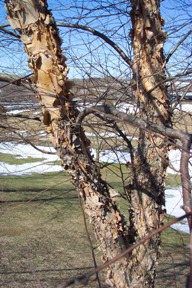And it begins again. The pamphlet in your Sunday bulletin, the florists and garden centers, even the supermarkets boost them. Now that Thanksgiving is past, poinsettia season, better known as Christmas, is upon us. While I love Christmas, I have a love-hate relationship with poinsettias.
The plants we know today have come a long way from their wild, shrubby ancestors in Mexico and Central America. The colorful parts are not the flowers, but rather modified leaves called bracts. They are induced to flower under the shortening days of the fall and early winter, and color up just in time for Christmas.
Poinsettias continue to be the most popular holiday potted plant. According to the National Agricultural Statistics Service, in 2007 wholesale poinsettia sales were over 8 million dollars in Pennsylvania alone, and 153 million dollars nationally.
Such an important crop receives a lot of attention from the academic community. Greenhouse trials around the country study the effects of everything from different growing conditions, to the effects of shipping and indoor storage. For example, how long they'll sit in your 70 degree house on your coffee table with no water.
At the University of Florida where I spent four happy, very warm years, they trial over 200 varieties of poinsettias in the traditional red, pink and white colors as well as more novel purple and variegated forms. As a graduate student, one of my tasks was to put them in boxes on a big truck and drive them around to see which varieties were the most likely to break and drop their leaves.
We also did fun things like put them in a dark room to see how long they would stay alive. After three months of careful watering, pinching and special lighting, it was fun to torture them a bit. Have I mentioned I have a love/hate relationship with poinsettias?
Consumer surveys are very important for the breeding companies. Good storage, compact growth habits and long "bloom" time are important, but so are consumer preferences for shades of color and bract shape. The University of Florida holds open houses for the public where they collect opinion data of that nature. Red continues to be the most popular color, with roughly 75% of poinsettias grown. But opinion data shapes what shades of reds are sold.
Poinsettias are not poisonous. I repeat, NOT POISONOUS. This myth has been around since the early 1900s, and has prevented many pet owners and parents of small children from enjoying these beautiful flowers. However in a conclusive study done at the Ohio State University, no parts of the plant were found to be toxic to either pets or humans. Enjoy them with a clean conscious.
My neighbor boy is selling poinsettias for his daycare. I guess I'll buy some.



